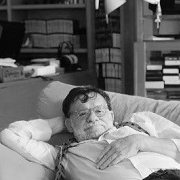Emergency-Proof Tourism: The Heritage of Industrial Archaeology in Internal Areas as a Potential for a Sustainable Tourism
A special issue of Sustainability (ISSN 2071-1050). This special issue belongs to the section "Tourism, Culture, and Heritage".
Deadline for manuscript submissions: closed (31 October 2021) | Viewed by 8040
Special Issue Editors
Interests: participatory design; policies for urban re-generation; design for promoting accessibility at various scales
Interests: participation; urban models; walkability; healthy cities; right to the city
Special Issues, Collections and Topics in MDPI journals
Special Issue Information
Dear Colleagues,
One of the activities most affected by the COVID-19 pandemic is tourism.
Even before the pandemic, the impressive growth of the tourism sector around the world has posed significant problems of environmental and social sustainability in recent years. The so-called “overtourism” phenomenon and reactions of residents around the world against it were only a telltale sign of critical issues that are caused by the often-uncontrolled growth of visitors.
The pandemic abruptly interrupted this trend due to the difficulty in moving around, the restrictions and lockdowns, etc. The fear of infection caused a reduction in the number of tourists by about two-thirds.
When the acute phase of the pandemic is over, it is most likely that a tourism upturn would include very different ways and kinds of tourism compared with those of the past.
It is not unreasonable to think that a more distributed tourism, in space and time, will be favored, reducing the pressure on the most congested places and extending the fruition to wider areas.
For some time now, alternative ways of tourism have been gaining importance in the tourism sector. This includes slow tourism, environmental tourism, ethical tourism, experiential tourism, tourism linked to knowledge, and care for places, all of which have enhanced and increased tourism in inland areas. It can be assumed that their importance will continue to grow in future circumstances.
Particular attention deserves that segment of tourism that is linked to the heritage of industrial archaeology, especially if the heritage is located in areas of great environmental interest (e.g. numerous mining sites).
This Special Issue aims to collect contributions that explore the topic of the heritage of industrial archaeology in internal areas as a potential for sustainable tourism, proposing analyses, case studies, projects, evaluations, and perspectives.
Dr. Nađa Beretić
Dr. Valentina Talu
Prof. Dr. Arnaldo Cecchini
Guest Editors
Manuscript Submission Information
Manuscripts should be submitted online at www.mdpi.com by registering and logging in to this website. Once you are registered, click here to go to the submission form. Manuscripts can be submitted until the deadline. All submissions that pass pre-check are peer-reviewed. Accepted papers will be published continuously in the journal (as soon as accepted) and will be listed together on the special issue website. Research articles, review articles as well as short communications are invited. For planned papers, a title and short abstract (about 100 words) can be sent to the Editorial Office for announcement on this website.
Submitted manuscripts should not have been published previously, nor be under consideration for publication elsewhere (except conference proceedings papers). All manuscripts are thoroughly refereed through a single-blind peer-review process. A guide for authors and other relevant information for submission of manuscripts is available on the Instructions for Authors page. Sustainability is an international peer-reviewed open access semimonthly journal published by MDPI.
Please visit the Instructions for Authors page before submitting a manuscript. The Article Processing Charge (APC) for publication in this open access journal is 2400 CHF (Swiss Francs). Submitted papers should be well formatted and use good English. Authors may use MDPI's English editing service prior to publication or during author revisions.
Keywords
- industrial archaeology
- mining sites
- experiential tourism
- alternative tourism
- overtourism







